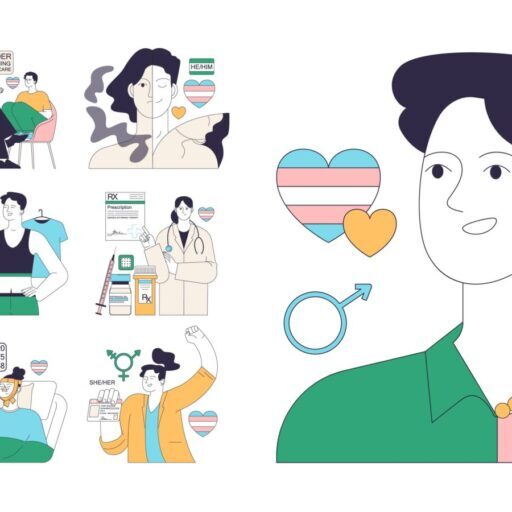How Virtual Trauma Therapy is Making Mental Health Care More Accessible

Have you ever thought about getting life-changing therapy without leaving your home? It’s possible! Virtual trauma therapy is redefining mental health care, making it accessible, flexible, and effective for people of all backgrounds and with varying needs.
No need to worry about finding a local specialist, navigating commutes, or even feeling anxious about walking into a therapist’s office. As a practicing therapist, I’ve witnessed firsthand how online trauma therapy can create meaningful change.
But, what really is online therapy for trauma, and how is it breaking down barriers?
What is Virtual Trauma Therapy?
Virtual trauma therapy, also known as online trauma therapy or virtual therapy for trauma, involves connecting with a therapist over secure digital platforms. The focus is on addressing trauma symptoms and working toward recovery through evidence-based approaches like Trauma-Focused Cognitive Behavioral Therapy (TF-CBT), Eye Movement Desensitization and Reprocessing (EMDR), Cognitive Processing Therapy (CPT), and Internal Family Systems Therapy (IFS).
I’ve seen the power of these methods through virtual sessions with clients who, due to various circumstances, couldn’t access in-person therapy. One client I worked with, a survivor of domestic violence, initially felt unsafe attending traditional therapy in person.
Virtual sessions allowed us to build trust slowly, in the comfort of her home and ultimately helped her reclaim a sense of safety and autonomy. Another client, who was queer and working through traumas related to transphobia and religious trauma, lived in southern Illinois (nearly 4 hours from our office in Chicago) and needed to engage with a specialist that they couldn’t find in their area.
Why Virtual Therapy is On the Rise
The demand for online trauma therapy didn’t simply appear overnight; it grew out of necessity, fueled by both technological advances and urgent mental health needs. The COVID-19 pandemic accelerated this shift, with more therapists (including our team at Tandem Psychology) adapting to offer virtual services. As a result, the vast majority of psychologists began providing virtual care during lockdowns (APA), and many have continued due to its effectiveness and demand.
Here’s why clients—and therapists like me—are seeing the value of online therapy for trauma:
Key Factors Fueling the Growth of Virtual Trauma Therapy
- Convenience – I’ve worked with clients who juggle demanding careers or caregiving responsibilities. For them, logging into a session from their living room, without a commute, made all the difference in maintaining consistent therapy.
- Anonymity – Virtual therapy provides a sense of privacy that makes it easier for clients to open up. I recall a young gay man dealing with trauma related to workplace harassment. He struggled to talk about it face-to-face but felt more comfortable sharing virtually, where the screen created just enough emotional distance.
- Increased Reach – One of the most fulfilling aspects of my practice has been helping clients in underserved areas. Virtual therapy allowed me to work with a teenager from a rural town who had experienced childhood trauma but had no access to a local trauma specialist.
- Flexibility – For many of my clients, virtual sessions fit into their busy lives. Whether it’s parents balancing therapy around school pickups or professionals scheduling sessions over lunch breaks, the flexibility of virtual therapy for trauma makes consistent care possible.
- Faster Access to Treatment – Traditional therapy can have long waitlists, which is frustrating when someone is struggling with urgent trauma symptoms. Virtual therapy often shortens wait times, which aligns with a study by Telemedicine and e-Health (2022) that found reduced wait times by up to 30%. We’ve seen this firsthand at Tandem, where virtual sessions are often more flexibly scheduled which has helped clients to start individual therapy much sooner.
- Expanded Treatment Options – Virtual therapy makes it possible to connect with therapists who specialize in specific trauma methods, like IFS or TF-CBT, which might not be readily available otherwise.
- Supporting Vulnerable Populations – Marginalized communities, like queer and LGBTQ+ people, often face barriers to in-person therapy. Virtual therapy has helped many of my clients feel safer and more comfortable engaging in treatment.
- Increased Consistency of Care – Consistency is key in trauma recovery. Virtual sessions help clients maintain regular appointments, even when life gets busy or symptoms get intense. This consistency can lead to faster progress and more stable mental health.
How Effective is Virtual Therapy?
The effectiveness of online trauma therapy often comes up as a question, and I can say confidently—both from reviewing the research and personal experience—that it works. In fact, many clients thrive in virtual settings, finding them more comfortable and less intimidating than in-person sessions.
Research backs this up, too. A 2018 study published in the Journal of Medical Internet Research found that online Trauma-Focused CBT reduced PTSD symptoms by 50% for participants. I’ve seen this mirrored in my practice, where clients have achieved remarkable progress through online trauma therapy.
Real-Life Benefits of Online Therapy for Trauma
The impact of virtual trauma therapy isn’t just theoretical—it’s personal. Clients have shared stories of reduced symptoms, better daily functioning, and feeling more empowered. Here are a few benefits I’ve observed:
- Fewer Flashbacks and Intrusive Thoughts – One client experienced severe flashbacks after a mugging incident. Through online trauma therapy, we worked on grounding exercises and cognitive restructuring, leading to a significant decrease in their flashbacks.
- Restoring Normalcy after Trauma – A woman I worked with struggled with panic attacks due to an assault on the CTA (Chicago Transit Authority). Through virtual sessions using IFS, she was able to engage in sessions. Her work ultimately led to a reduced frequency of her panic and eventually regaining the confidence to take the El again.
- Improved Coping – Several clients have shared how virtual sessions taught them better ways to manage triggers. For instance, a young woman who had panic attacks related to past abuse learned practical, real-time coping techniques that she could immediately apply in her daily life.
- Greater Sense of Empowerment – Clients often report feeling more in control of their therapy journey. Virtual therapy allows them to choose where and how to engage, giving them ownership over their healing process.
Frequently Asked Questions About Virtual Therapy
People are often unsure if virtual therapy for trauma is the right fit for them. Here are some common questions I hear from potential clients, along with my insights as a therapist.
- Is virtual therapy secure? Absolutely. At Tandem, we use encrypted, HIPAA-compliant platforms to ensure confidentiality and that data is protected.
- How do I find a good therapist for virtual trauma therapy? When looking for a trauma therapist online, check their credentials, training in trauma-specific approaches (like IFS, cognitive processing therapy, or trauma-focused CBT), and experience working with trauma survivors. It’s okay to try a few before finding the right match—therapeutic fit matters!
- Can virtual therapy help if I’ve never done therapy before? – Yes! In fact, many first-timers find it easier to start online.
- What can I expect in a virtual therapy session? – Sessions mimic what happens in an in-person session. Your therapist will want to get to really know you, listen for patterns and ways to help, potentially teach skills, and empower your healing from within.
- Will virtual trauma therapy work for me? – If you’re seeking a convenient, private, and flexible way to work through trauma, virtual therapy is definitely worth considering. If you don’t like it, it’s okay to pivot.
Start Your Healing Journey with Virtual Trauma Therapy
If you’ve been waiting for the right moment to seek help for trauma, this could be it. Online therapy for trauma is accessible, flexible, and often just as effective as in-person care. As an individual therapist, I’ve seen how this approach can transform lives. Reach out today and start experiencing the benefits of virtual therapy for trauma!
This blog is made for informational and educational purposes only. It is not medical advice. The information in this blog is not intended to (1) replace a one-on-one relationship with a qualified licensed health care provider, (2) create or establish a provider-patient relationship, or (3) create a duty for us to follow up with you.



